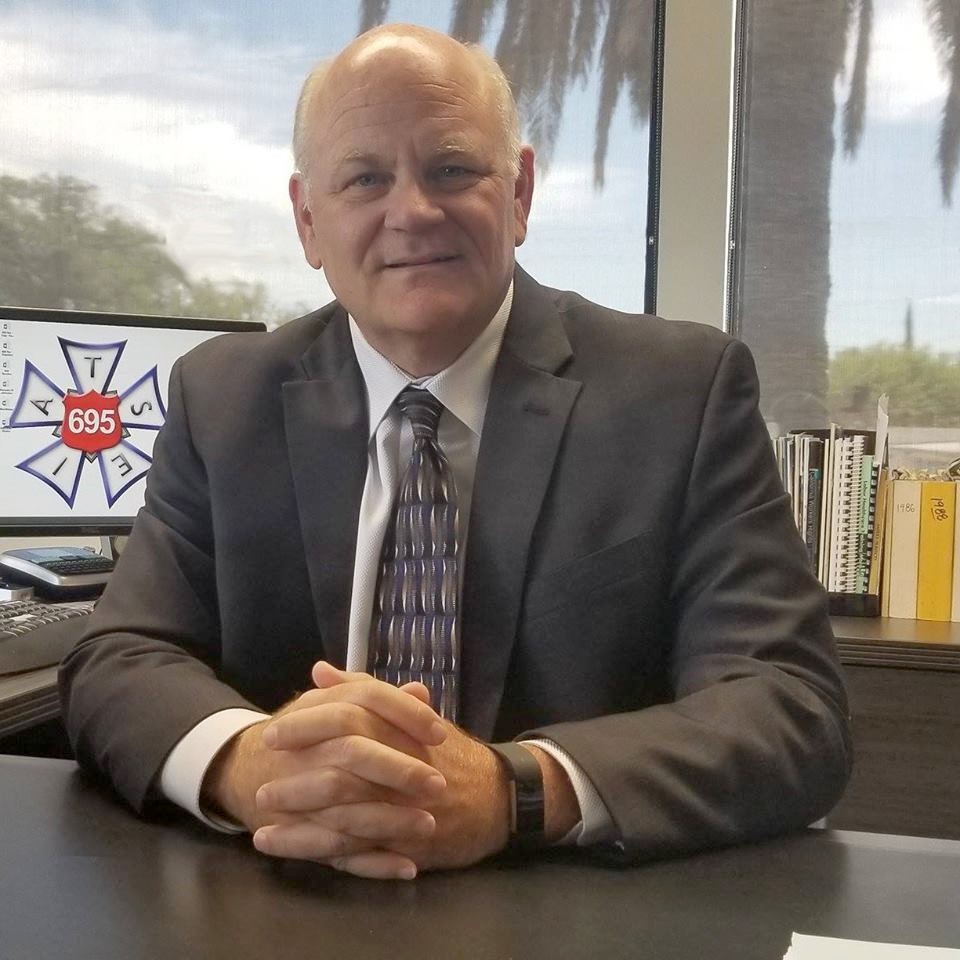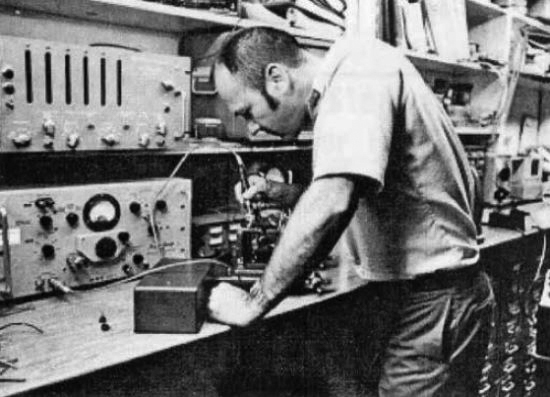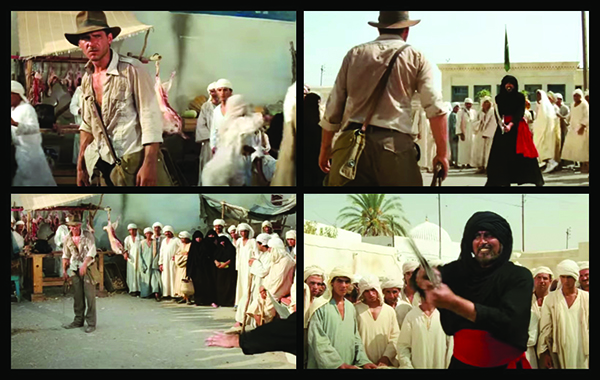Celebrating 90 Years of Excellence and Innovation

We were enormously proud to celebrate Local 695’s 90th anniversary on September 15. That’s ninety years of rich history in sound, video. and projection for motion picture and television production—not just doing the work, but innovating the job. That’s why at the IATSE General Executive Board Meeting in 2015, International President Matt Loeb lauded Local 695 as “the technical crown jewel of the IA.”
The contributions of Local 695 members have had an extensive impact on our industry, from the earliest “talkies” to today’s giant video wall projections. Here is just a small sample of some of the groundbreaking technologies developed by 695 members.

The “Hansard Process” for the Process Shot
(Rear/Front Screen Projection)
William Hansard, Sr. | Local 695 Projectionist
A Process Shot is the in-camera technique used for combining foreground performances by the actors with background scenes projected behind them. Bill was one of the earliest pioneers in the 1930’s development of the Process Shot, and is famously known for his memorable work on the tornado scene in MGM’s The Wizard of Oz. In the years since, countless driving scenes, background explosions, spaceships, asteroids, and distant worlds have been photographed using techniques built upon the work of Bill Hansard.
The Fisher Microphone Boom
James L. Fisher | Local 695
Y-8 Microphone Boom Operator
While working at Universal Studios, Jim Fisher invented this iconic perambulator mic boom, first used in the 1950’s and still in use today on virtually all 4 four-camera live-audience sitcoms. In the early years, there were several manufacturers offering competing sound boom designs, but “the Fisher” is the one that outlasted them all, with four different models running from sixteen to twenty-nine feet in length. With the advent of digital cameras and very long shooting takes, we’re now seeing a resurgence in their use on episodic television and features.

The Video Assist “Video Tap”
Jimmy Songer | Local 695 Y-3A Video Engineer
While working at Warner Bros. Production Sound and Video Services, Jimmy set out to improve the Video Assist system Jerry Lewis first used on the The Bellboy (1960) at Paramount. Jerry attached a video camera on the outside of the film camera to capture video roughly similar to what the camera saw, and that video was distributed to multiple TV monitors placed around the set. The system Jimmy invented placed a beam-splitter and video pickup tube inside the camera, directly within the light path behind the lens. First used on Blake Edwards’ The Party (1968) for MGM, this innovation allowed Video Assist to grab an image framed exactly the same as what was being caught on film.
The First Video Assist Recording & Playback
Don Howard | Local 695 Y-7 Video Engineer
The next big advancement for Video Assist was developed by Don Howard and Jimmy Songer while working at Warner Bros. Production Sound and Video Services. At that time, videotape recorders were still very bulky, but Jimmy and Don were able to reduce the size significantly enough to integrate Jimmy’s Video Tap technology with a portable record and playback system that could be used on location. Before that, you had to wait until the next morning to watch “Dailies” but with this record and playback now a part of the Video Assist package, the Director and the production crew were able to watch playback of any scene instantly.

Quad Split Monitoring for Video Assist
Harry Flagle | Local 695
Y-4 Supervising Video Engineer
Also at Warner Bros. Production Sound and Video Services, Harry invented the Quad Split box, which could take the output of four separate cameras and combine them into a feed for a single Video Assist monitor, with each camera image appearing in a quadrant on the single screen.
Boom-Trac Fisher Boom Mounting System
Bruce Arledge Jr. | Local 695
Y-1 Production Sound Mixer
The Fisher boom is synonymous with four-camera live-audience sitcoms but sound booms placed up in the “green beds” were always difficult to work with because they had to be locked into fixed positions. Bruce solved the problem in 1996 with Boom-Trac, a dolly system for mounting Fisher booms. This proved to be such an effective solution that to this day, you’ll seldom see green bed booms mounted any other way. (Look for an article on Bruce Arledge Jr. in the next issue.)
The First Digital Video Assist:
Cinelogic “Deja View”
Sam Cherroff | Local 695 Y-4 Video Engineer
In the late 1990’s, Sam took a chance by quietly bringing his creation, the first all-digital Video Assist system, onto the set of a commercial shoot. Faster, more dependable, and far more capable than videotape, all-digital Video Assist systems soon became the standard for Video Assist everywhere.
Over the years, there have been many more contributions made by Local 695 members, from timecode slates developed by Mike Denecke, to motion-control hardware and software, and no doubt many more are being developed at this moment.
Stand together and stay strong.
In Solidarity,
Scott Bernard
Business Representative